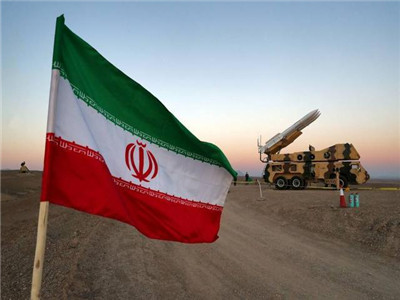It was a year ago that a U.S. drone strike killed Iranian General Qassem Soleimani and nine others. He was the country's most powerful military figure. Iran has vowed to avenge his death, and the U.S. has warned not to and has been flying bombers over the region. NPR's Peter Kenyon joins us. Peter, thanks so much for being with us.
PETER KENYON, BYLINE: Hi, Scott.
SIMON: And please remind us about the chain of events last year.
KENYON: Well, tensions have been high for quite some time. There was an American contractor killed in Iraq, and the U.S. went after the Iran-backed militias they were holding responsible for that death. Tensions continue to increase. Militiamen at one point seemed like they were about to storm the U.S. Embassy. Then came this American drone strike. It killed Soleimani and an Iraqi militia deputy commander, among others. Tehran then hit back with missile attacks on Iraqi bases where U.S. military personnel were stationed — no casualties there. But Iranian officials have been saying they're not finished. They've got more avenging to do for Soleimani's killing.
SIMON: Of course, President Trump's about to leave office. Why this muscle-flexing now?
KENYON: Well, there's been signals being sent on both sides. And on the aggressive side of things, we've been seeing American B-52s flying over the region. That prompted the foreign minister of Iran, Mohammad Javad Zarif, to take to Twitter to complain about, quote, a "plot to fabricate a pretext for war." Last month, Washington was blaming these Iran-backed militias again for another rocket attack targeting the U.S. Embassy compound.
But then, on the more peaceful side, the Pentagon just announced it's withdrawing the aircraft carrier USS Nimitz at a moment of raised tension, sending it back to home port. That's seen by some as a sign the U.S. isn't looking for a clash right now. In Iran, it's easy to find angry rhetoric in the media and on the air aimed at Washington, but also qualifications such as, we don't have to avenge Soleimani's death right on January 3. That would be the one-year anniversary. It could happen any time, maybe much later. But no one can rule out happening sooner either, unfortunately.

SIMON: Does the fact that the Trump administration, which ordered the strike, is in its final days offer an out to both sides?
KENYON: It could. I mean, the possibility exists. Biden and his team have certainly signaled that they intend to shift Iran policy onto a less confrontational footing. Getting into a clash might make that harder to do. Possibly, he may even return to this 2015 Iran nuclear agreement, the one that Trump pulled the U.S. out of in 2018.
SIMON: The head of Iran's civilian Atomic Energy Organization said today, I gather, that his agency's ready to enrich uranium up to 20%, far lower than the 90% weapons-grade enrichment but considerably higher than what the Iran nuclear deal allowed, which was under 4%. Is there anything left of the 2015 deal to save?
KENYON: Well, there is, believe it or not. Everything that's been done on both sides — the U.S. putting the sanctions back on Iran, Iran violating some of the limits in the deal, including this latest announcement about enriching to 20% — all of that can be reversed. But it may not be just as simple as, OK, the deal's back on again. Snap your fingers, and it's done. The head of the U.N. nuclear watchdog agency, the IAEA, says that's not really easy. They can't go back to square one because things have changed. Time has moved on. What he says is that new negotiations are needed, and that won't happen overnight. In fact, Iran is resisting the idea of new negotiations at all, saying, first, get back into the old deal, and then we can talk.
SIMON: NPR's Peter Kenyon speaking from Istanbul. Thanks so much for being with us.
KENYON: Thank you, Scott.












